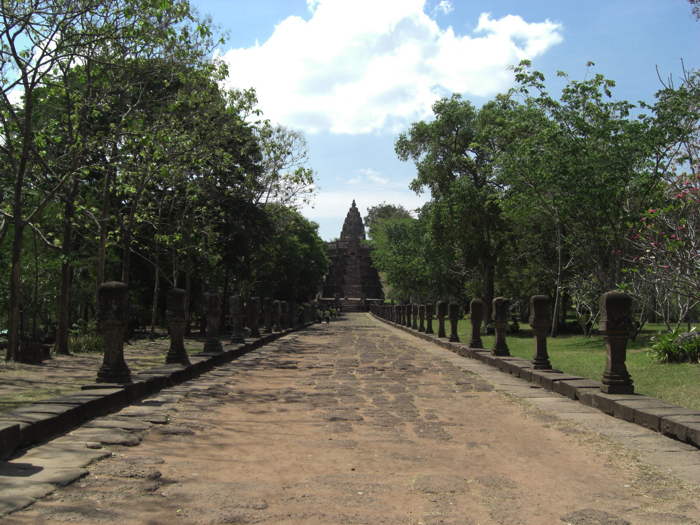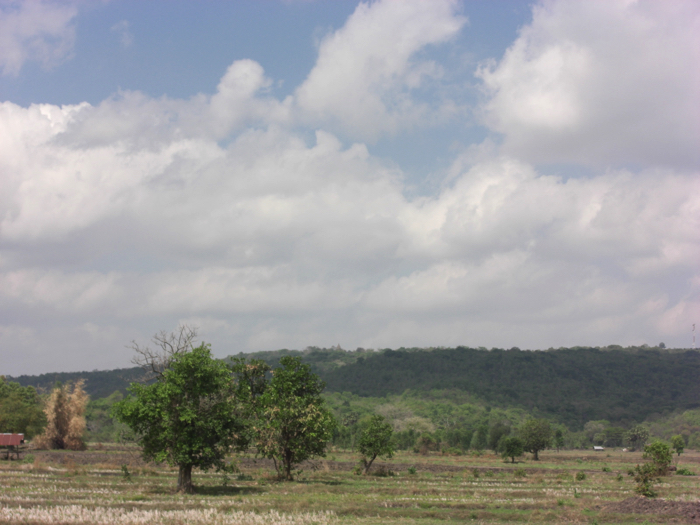- Project Leader : Sato Keiko (Sophia University, Sophia Asia Center for Research and Human Development)
- Collaborators : Kobayashi Satoru (Kyoto University. Center for Southeast Asian Studies)
- : Chirapat Prapanvidya (Silpakorn University, Sanskrit Studies Center)
- : U-Tain Wongsthit (Silpakorn University, Sanskrit Studies Center)
- : Nipat Yamdate (Silpakorn University, Epigraphy in Thai and Oriental Language,Faculty of Archaeology)
Outline of Research
This study will conduct basic research on Khmer inscriptions in Thailand. Khmer inscriptions in the neighboring country of Cambodia offer intriguing clues for understanding regional history differently from previous studies, which were based on the inscriptions in Angkor, the royal city of the Khmer Empire. Among these, Khmer inscriptions in Thailand are the greatest in number and cover a long timespan, from the Pre-Angkorian to Post-Angkorian period. Hence, inscriptions in Thailand could be important sources of information about the areas around Angkor. In Thailand, some independent institutions contribute to the systematic development of epigraphy. However, publicly available data on Khmer inscriptions are neither complete nor updated. Moreover, it has been revealed that some transliterations and translations of Khmer inscriptions, published since the study of Khmer epigraphy began, need to be corrected. This basic research will reveal new insights into the role and reality of present-day Thailand under the reign of the Khmer Empire.
Description
This study aims to create a list of Khmer inscriptions in Thailand through checking the latest information on the inscription locations and conditions, and to translate and annotate these inscriptions.
Although George Coedès, a prominent scholar of Khmer civilization, made a list of Khmer inscriptions in Thailand and translated them, he did not cover all inscriptions. Moreover, some of his transliterations and translations were incorrect. Since then, several new inscriptions have been discovered. Foreign researchers, such as those from France and Thailand, also contributed translations, but they are also incomplete. Considering the importance of Khmer inscriptions in Thailand for understanding Khmer civilization and history, re-transliterating and re-translating those inscriptions is a basic but urgent task.
The academic tradition and background of the related studies in Thailand must be considered well before starting the research, because of their influence on the current condition of epigraphic research of Khmer inscriptions in Thailand. Following this, the collation of inventories made by Thai and Cambodian must be done systematically. For example, “K” or “Ka” is attached to the inventory number of Khmer inscriptions in Cambodia, while all inscriptions found in Thailand are sorted by location. This causes mismatches among different annotations.
Due to serious restrictions on foreign researchers’ access to epigraphic data in Thailand and a lack of updating and correcting transliterations and translations, researchers of Southeast Asian history, especially foreign nationals, have likely studied related topics based on the incomplete epigraphic information and false transliterations (and translations) for a long time. This research project will address this problem.
This study will update the data set on all Khmer inscriptions in Thailand and make the results available to the public in English and in Thai. The following three results are expected. First, we can widely provide the latest and detailed data on these sources to the academic community. We intend to release the obtained information both in print and online in the future, which will significantly contribute to the study of Southeast Asian history. Second, this study might expand the scope of study for Khmer epigraphers in Thailand. It can also contribute to international epigraphic research not only of Khmer history, but also of Southeast Asian history. Finally, the research will reveal the conditions of each original inscription. In the future, this study could provide basic data to analyze inscriptions using digital technology.
 Pr. Phnom Rung [1150 A.D.] |
 The hill that Pr. Phnom Rung is located |
